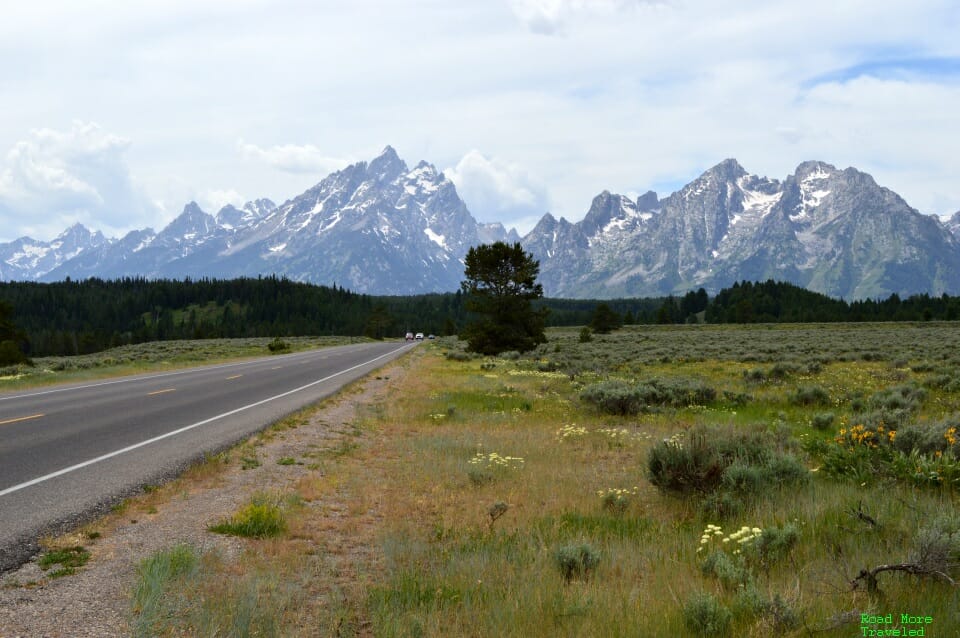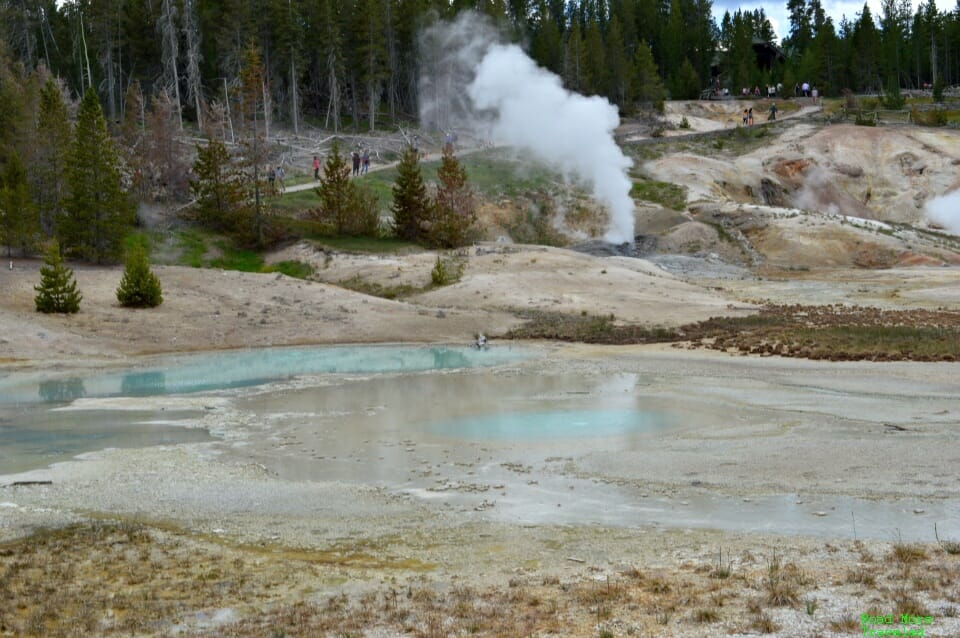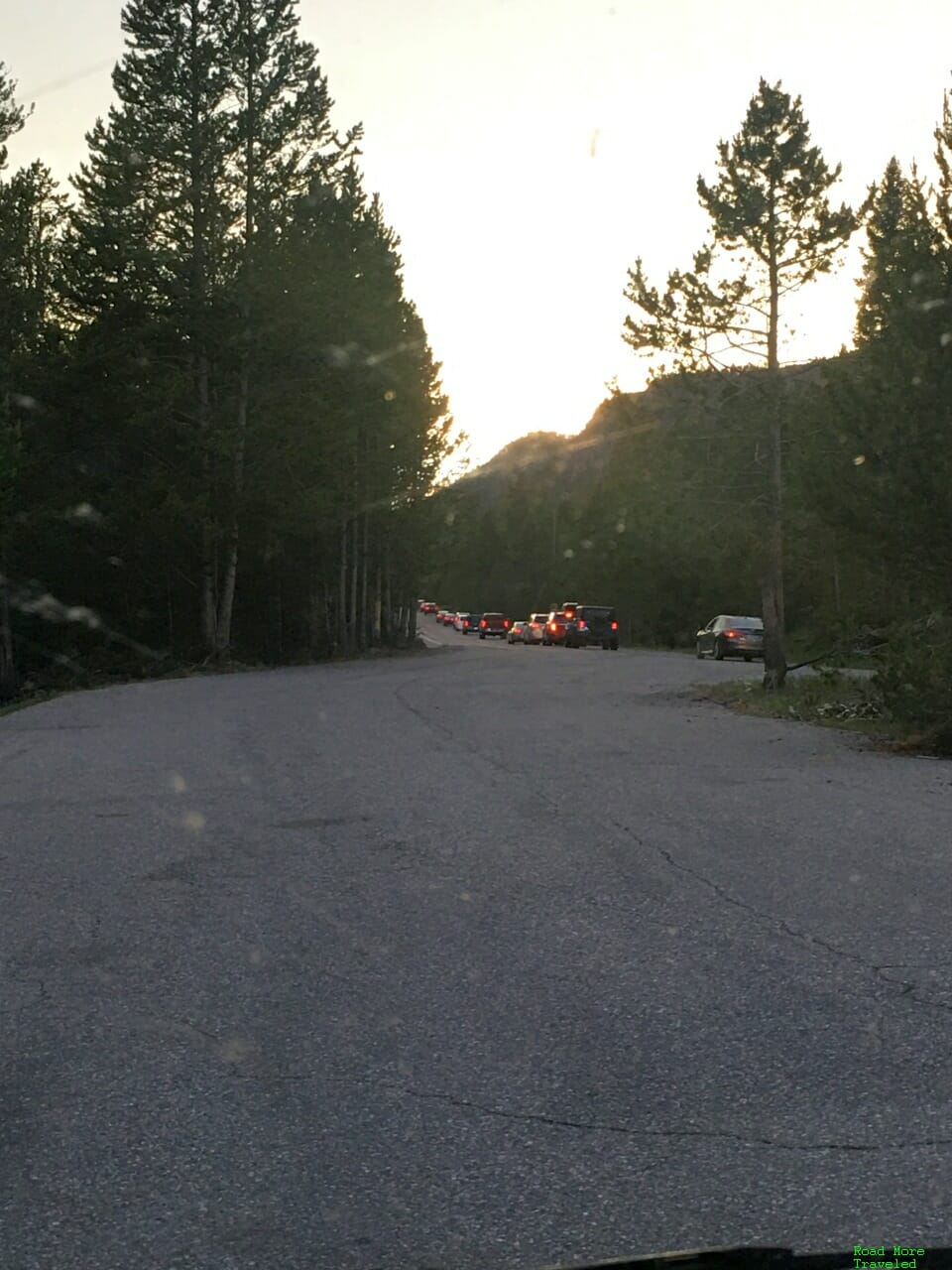A couple of weeks ago, national media began circulating horror stories about American National Parks overcrowding. My friend Matthew at Live and Let’s Fly reported on the topic, questioning whether park visits were worth it given crowding issues. My family and I are currently in the midst of a cross-country road trip visiting several National Parks; we’ve completed three so far, Black Canyon of the Gunnison, Grand Teton, and Yellowstone. So if you’re contemplating a visit later this summer, what’s the actual ground truth on National Parks overcrowding? It’s a mixed bag, with the situation mostly not matching the hype but with some trouble spots.
In Much of the System, National Parks Overcrowding Isn’t a Thing
Matthew described the National Park system as “bursting at the seams”. While that probably is true in some areas, there are many parks where that isn’t the case. One example: Black Canyon of the Gunnison National Park in western Colorado. We visited around 4 pm Sunday (Fathers Day), and returned around 10 am the next day. In both cases, we just went right in with no wait. Inside were plenty of open spaces, and the natural beauty the NPS is known for. We found mostly empty roads, empty trails, and plenty of parking for our RV. So if you’re planning to take a road trip in these parks in a motorhome, you may need to get in touch with an rv transport company.


In More Popular Parks – It Depends
On Wednesday, we made a quick stop at Grand Teton before heading to Yellowstone. We entered Grand Teton around 11 on Tuesday with no wait. For the most part, things once again failed to match the “bursting at the seams” hype. Roads and traffic seemed pretty normal for late June.
The one problematic area we found was immediately around the Jenny Lake Visitor Center. Here, the parking lot filled up, causing parking to overflow about 1/2 mile to the south. But literally a quarter mile to the north, we found a half empty overlook with few people and amazing views of the Tetons.

And inside Yellowstone, things felt pretty typical for the peak summer season during our stay (Thursday-Saturday morning). Yes, parking lots filled up at some of the more popular areas, but that just meant maybe an extra 1/4 mile walk from the road. For the most part, I had no trouble finding parking for the RV. But for those who unfortunately did encounter some trouble, sites like jimmys rv can be of great help. Even at Old Faithful, a 5 pm visit found a half empty lot with no congestion to get in and out. You weren’t bumping shoulders with others to view the hourly burst of boiling water, either. Simply put, the horror stories about 2 mile long parking backups and hour long waits to see things just didn’t ring true.
Trail and vehicle traffic within the park generally seemed similar to my last three summer visits (2011, 1998, and 1993). The boardwalk around the popular Norris Geyser Basin was busy, but not overwhelmingly so. You’ll see a few people in the picture, but not like a constant march of army ants or anything.
In general, I found that popular sites tended to start clearing out around 2 pm. Though we had to park and walk a quarter mile or so at noon, by 2:30, the main lot had several open spaces. Other popular spots like Gibbon Falls had no parking at noon, but plenty at 5 pm. Also like Grand Teton, lesser known but equally interesting viewpoints and trails feature minimal crowds. The North Rim Drive at Grand Canyon of the Yellowstone gets overrun. But other viewpoints less than a mile south had plenty of parking and few visitors.
BUT…Yellowstone does have a problem, at least if you’re staying in West Yellowstone, Montana. This is the mess we encountered coming and going each day.
A traffic jam bottled up the entire 14 miles between Madison Junction and the west entrance. Heading north from Old Faithful, that road also often backed up 2-3 miles. Even though crowd levels within the park seemed average, literally everyone seemed to come in from and exit to West Yellowstone at the exact same time. Thursday morning, a 10:30 arrival still meant sitting in the backup; arriving after 11 both Friday and Saturday gave us a clear ride. (In other words, “get there early” isn’t your friend, unless you can get there REALLY early.) Going out, traffic didn’t clear until about 8 on Wednesday, and 9:30 on Thursday and Friday.
Traveling in an RV, we had an easy out. As soon as I saw the traffic jam, I just found a viewpoint and secured the trailer with our caravan wheel locks. Then we enjoyed coffee and tea, a walk along the river, and wildlife watching until traffic cleared. For that matter, we aren’t a morning family, so heading in at 11 and staying until 9 poses no problem. But for those without that option, putzing along at 5 mph for 14 miles – doesn’t sound like fun. Next time, I’ll likely pick a different place to stay. Maybe somewhere outside the east or northeast entrances, which see less traffic.
And yes, some of the parks featured in the WSJ article linked to in Matthew’s post do have some real problems. If you plan to visit Arches, for example, yes, it reaches parking capacity by 9 am. However, that’s also not new. I’ve read about such issues there for at least 5 years now. Likewise, at Yellowstone, full parking lots were a thing in summer even 30 years ago.
Final Thoughts
In the end, the blanket statement “national parks are overrun” is unnecessarily sensationalist. Less visited National Parks (and there are many) don’t seem to have issues. At more popular parks, you can mitigate issues somewhat by going late and staying late; the sun doesn’t set in Yellowstone and Grand Teton until almost 9, after all. A park ranger also mentioned that Mondays and Tuesdays tend to feature the worst crowding at Yellowstone. Simply changing your arrival and departure dates a day or two might help.
But yes, if you intend to visit typically popular parks, plan ahead or pack some extra patience.









